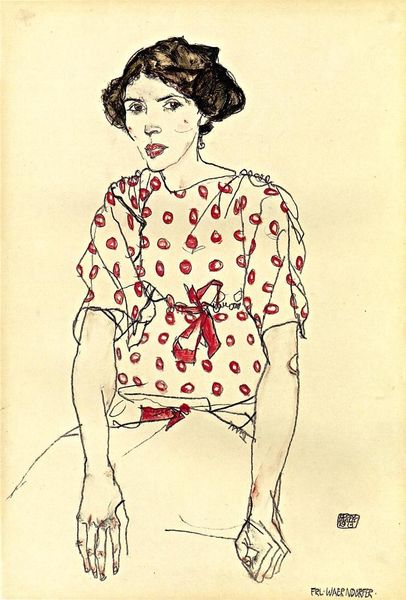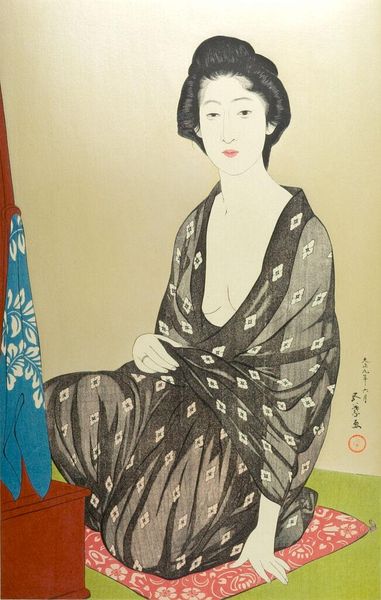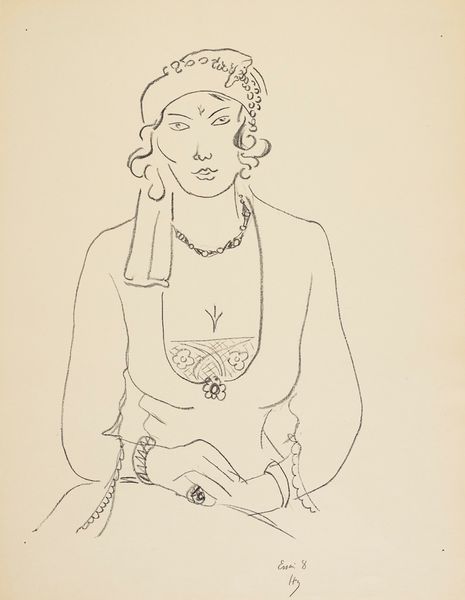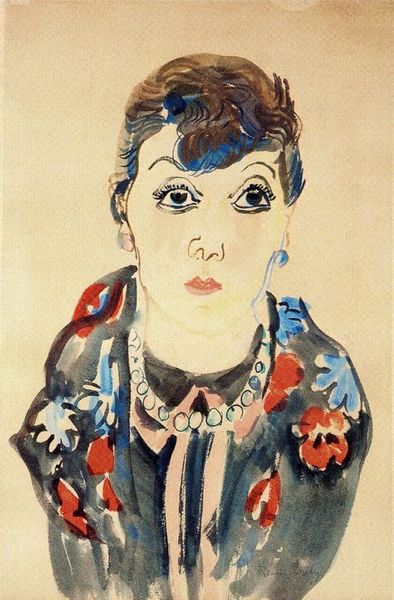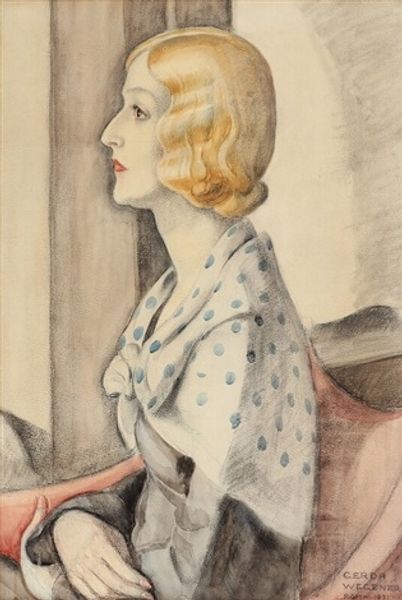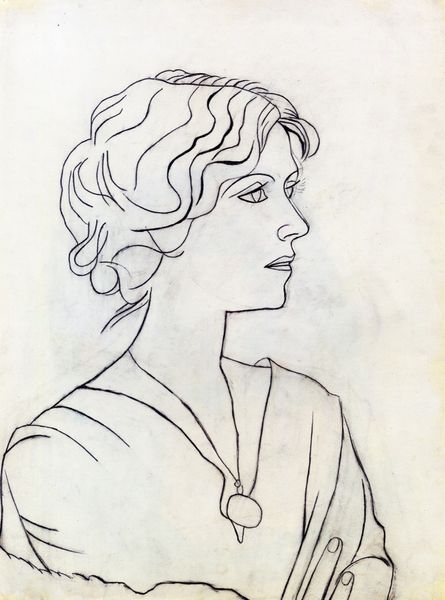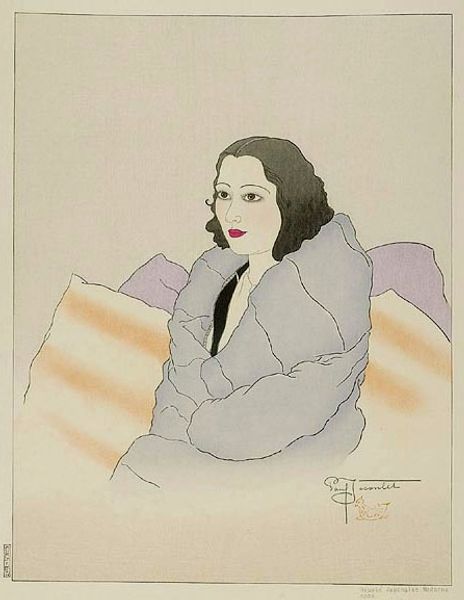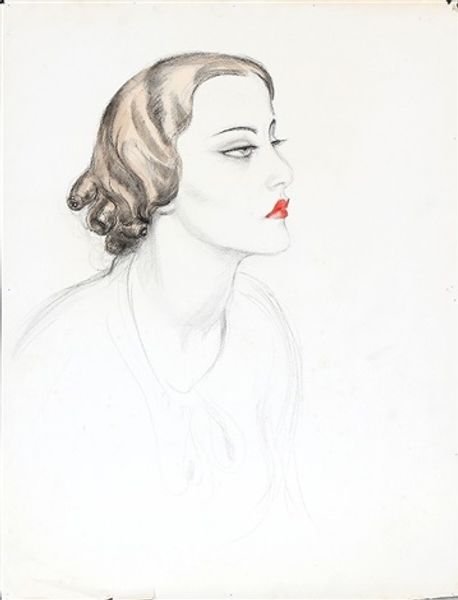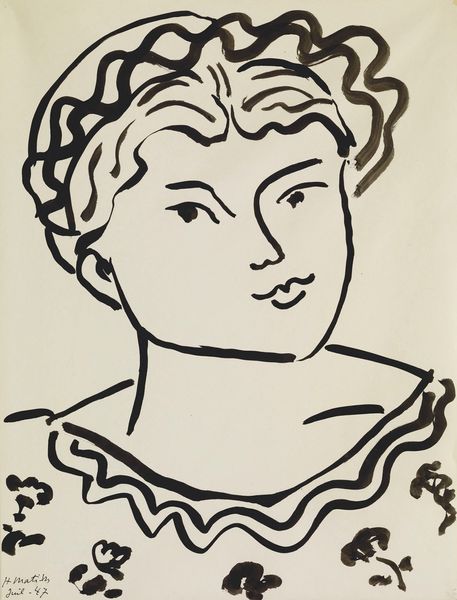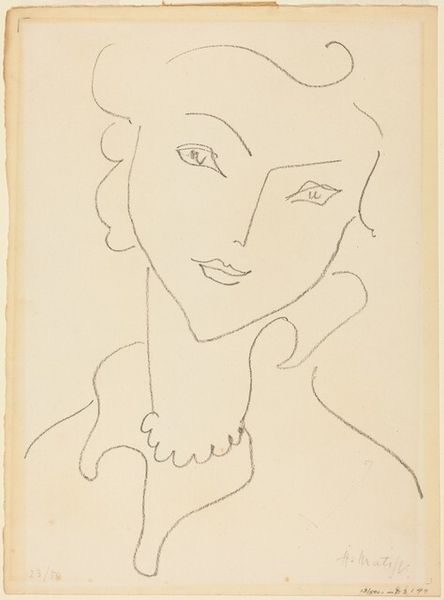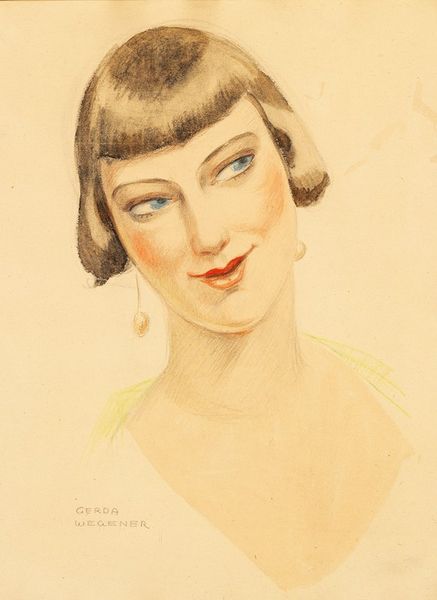
Copyright: Public domain Japan
Editor: Paul Jacoulet's "Lady in Red," a print from 1935, feels like a fascinating blend of styles. The watercolor and woodblock-print techniques give it an almost dreamlike quality, but it also reminds me of a fashion plate. What catches your eye, and how do you interpret this work? Curator: The layering of cultures here is compelling, isn't it? Notice how the artist merges the Ukiyo-e tradition, typically depicting Japanese subjects, with a clear influence from Western portraiture of the 1930s. The 'Lady in Red' title itself evokes a certain romantic trope from the West. But look closer – how does the execution differ from, say, a traditional Western portrait? Editor: Well, the lines are so clean and deliberate, and the color palette is very specific. It doesn’t have the same shading or depth I’d expect from a typical portrait. Is that difference important to its cultural meaning? Curator: Absolutely. Think about how symbols operate. Red, for example, has very different connotations across cultures. In the West, it might signify passion or danger, but in some East Asian contexts, it can represent luck or prosperity. The lady's very pale complexion might point to specific ideals of beauty in one cultural frame and signal something quite different when seen through another. Do you find the woman's expression ambiguous? Editor: I do! She almost looks a little melancholy, but there's also a hint of sophistication. The blend of Western subject matter with Eastern techniques makes for a striking and enigmatic artwork. Curator: Precisely. And isn’t that cultural interplay what makes it such a memorable piece? The echo of both worlds in one image. Editor: Definitely. It highlights how art can carry multiple cultural meanings simultaneously.
Comments
No comments
Be the first to comment and join the conversation on the ultimate creative platform.


